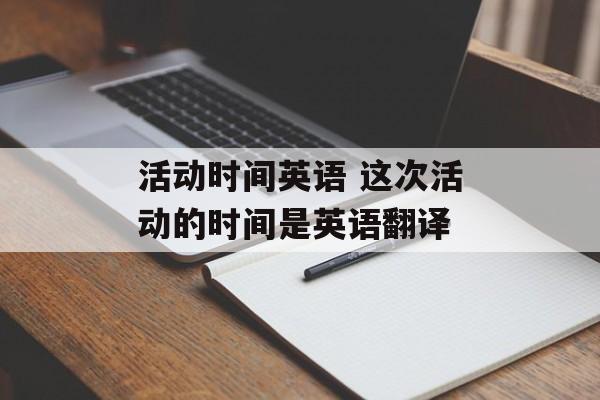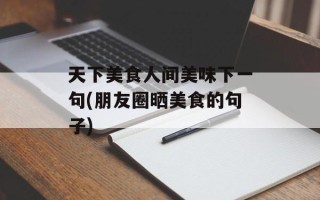今天给各位分享活动时间英语的知识,其中也会对这次活动的时间是英语翻译进行解释,如果能碰巧解决你现在面临的问题,别忘了关注本站,现在开始吧!
本文目录
一、英语时间表达.
1.所有的时间都可以用“小时+分钟”直接读:
2.如果所表述的时间在半小时之内,可以用“分钟+ past+小时”:
3.如果所表述的时间在半小时之外,可以用“(相差的)分钟+ to+(下一)小时”:
1)10:35 twenty-five to eleven
4.如果所表述的时间恰好为半小时,可以用“half+ past+小时”:
5.如果所表述的分钟和15有关,就有三种表达法:
(15分钟又叫一刻钟:a quarter)
1)9:15 nine fifteen; fifteen past nine; a quarter past nine
2)3:45 three forty-five; fifteen to four; a quarter to four
现在是两点整。It's two./It's two o'clock。
另外英语中的 noon和midnight可分别直接表示白天和夜晚的12点:
2)It's(twelve) midnight。
8.若想表明是上午,可在时间后加上a.m。
如:thirteen past six a.m。(上午六点十三分)。
若想表明是下午,可在时间后加上p.m。
如:four o'clock p.m。(下午四点)。
1)It's nine forty-five。=It's a quarter to ten。
2)It's two seventeen。=It's seventeen past two。
3)It's three。=It's three o'clock。
4)It's nine thirty。=It's half past nine。
5)It's six fifteen。=It's a quarter past six。
6)It's three fifty。=It's ten to four。
二.世纪、年代、年、月、日的表达
1)用“定冠词+序数词+century”表示
例:在十七世纪写作:in the 17th century,读作:in the seventeenth century
2)用“定冠词+百位进数+s”表示
例:在十七世纪写作:in the 1600s,读作:in the sixteen hundreds
注意:这种情况下,实际表达的世纪数是 *** 数字本身加一。
用“定冠词+(世纪百位进数+十位年代数)+s”表示
例:在二十世纪三十年代写作:in the 1930s,读作:in the thirties of the twentieth century或 in the nineteen thirties
表示某年代的早期、中期和晚期,可以在定冠词后添加early, mid-和late
在二十世纪二十年代早期 in the early 1920s
在二十世纪五十年代中期 in the mid-1950s
①读年份时一般分为两个单位来读,前两个数为一个,后两个数为一个:
1949读作:nineteen forty-nine或nineteen hundred and forty-nine
②如果是三位数,先读之一位,再把后两个数合起来读:
253读作:two fifty-three或two hundred and fifty-three
③另外: 2000读作:two thousand,1902读作:nineteen hundred and two或 nineteen o two
④如果要使用year,year放在数词之前
例如:in the year two fifty-three B.C.在公元前253年
月份是专有名词,除了少数几个月份外都有缩写形式:
注意:缩写形式后面的点不能省略,因为它是表示缩写形式的符号。
例:十月一日写作:October 1, October 1st, 1 October, 1st October,(the) 1st of October等,其中的October都可以写成缩写形式Oct.
读作:October the first或the first of October
写作:January 17(th), 2002或January seventeenth, 2002(日和年之间需用逗号隔开)
读作:January the seventeenth, two thousand and two
写作:17(th) January, 2002或the seventeenth of January, 2002(月和年之间需用逗号隔开)
读作:the seventeenth of January, two thousand and two
若指在哪一年或哪一月,用介词in;若具体到某一天,需用介词on。
3)She was born in August 1989。
4)She was born on 2nd August, 1989。
关于四位数年份的读法有下列几种情形:
1.一般情况下,将表示年份的四个数字按前后分为两组,每一组的数字都按基数词来读。
1865年读作 eighteen sixty-five
1998年读作 nineteen ninety-eight
2.如果是整百的年,后面的两个“零”读为 hundred。
3.十位数字上为“零”,该“零”读为字母 O的发音。
2008年读作 two thousand and eight或 O eight
2017年读作 two thousand and seventeen或 two thousand seventeen
5.三位以内数字的年份,一般是按照基数词的 *** 来读。
531 BC读作 five hundred(and) thirty-one BC
日期的写法可以采用基数词和序数词两种形式。
例如: March 1也可以写成March 1st;May 29也可以写成May 29th。但是,日期的读法只能用序数词的形式。
October 31(October 31st)读作October(the)thirty-first
August 26(August 26th)读作August(the)twenty-sixth
注意:通常情况下,the是不读出来的。
在朗读时,"月份"一般直接用英语读出;"日"则要读成"the序数词";年份,一般分为两个单位来读,前两个数为一个单位,后两个数为一个单位。
1982年读作 nineteen eighty-two, 1900年读作 nineteenhundred。
如果是三位数,先读之一位,再把后两个数合起来读。
如:984年可读为 nine eighty-four,757年读成 sevenfifty-seven。
另外,像 2000年一般读成 two thousand, 2001年则读成 two thousand and one,以此类推,2004年应读成 two thousand and four或者 two thousand four(通常情况下“and”不读出来)。 January 12th, 1993读成 January(the)twelfth, nineteen ninety-three。
1.1986年 10月 23日→October 23, 1986/October 23rd, 1986
2.2002年 1月 17日→January 17, 2002/January 17th, 2002
日期的表示法英国和美国稍有不同,英国通常表示为“日—月—年”,美国通常表示为“月—日—年”。如“10月10日”可表示为 October 10,1985(美)或10(th)October, 1985(英)。
注意:更好避免把整个日期都写成数字,这在英美语中表示的含义并不相同:如“2. 7. 97”、“2-7-97”、“2/7/97”这类表达,在美国英语中表示“1997年2月7日”,而在英国英语中则表示“1997年7月2日”。
二、英语的时间表达法
1、所有的时间都可以用【小时+分钟】直接读:
2、如果所表述的时间在半小时之内,可以用【分钟+ past+小时】:
3、如果所表述的时间在半小时之外,可以用【(相差的)分钟+ to+(下一)小时】:
4、如果所表述的时间恰好为半小时,可以用【half+ past+小时】:
5、如果所表述的分钟和15有关,就有三种表达法:
(15分钟又叫一刻钟:a quarter)
nine fifteen; fifteen past nine; a quarter past nine
three forty-five; fifteen to four; a quarter to four
It's two./It's two o'clock.
(另外英语中的 noon和 midnight可分别直接表示白天和夜晚的12点)
二、世纪、年代、年、月、日的表达
①用“定冠词+序数词+century”表示。
例:在十七世纪写作:in the 17th century,读作:in the seventeenth century.
②用“定冠词+百位进数+s”表示。
例:在十七世纪写作:in the 1600s,读作:in the sixteen hundreds.
注意:这种情况下,实际表达的世纪数是 *** 数字本身加一。
用“定冠词+(世纪百位进数+十位年代数)+s”表示。
例:在二十世纪三十年代写作:in the 1930s,读作:in the thirties of the twentieth century或 in the nineteen thirties.
①读年份时一般分为两个单位来读,前两个数为一个,后两个数为一个:
1949读作:nineteen forty-nine或nineteen hundred and forty-nine
②如果是三位数,先读之一位,再把后两个数合起来读:
253读作:two fifty-three或two hundred and fifty-three
③另外: 2000读作:two thousand,1902读作:nineteen hundred and two或 nineteen o two
④如果要使用year,year放在数词之前。
例如:in the year two fifty-three B.C.在公元前253年
三、日常生活中怎样用英语询问日期和时间
Fill out the form.(请填这张表。)
What's today's date?(今天几号?)
It's the tenth.(今天10号。)
It's August thirteenth.*表示日期的时候在数字后面加th。但是1号、2号、3号分别是first、second、third。
It's the thirteenth of August.
What day is it?*What's today's date?表示问几号;What day is it?表示问星期几。
Do you have the time?*问时间时记住在time前加the。
May I ask the time?(我可以问您现在几点吗?)
Could you tell me what time is it now?(您能告诉我现在几点吗?)
It's almost noon.*夜里零点是midnight。
It's a quarter to two.*a quarter是四分之一的意思,在这儿是60分钟的四分之一的意思,即15分钟。另外,这里的to是表示“~前”的意思,即“差15分2点”。
It's 1∶45./It's one forty-five.
It's five minutes after one o'clock.
The clock says 3∶15(three fifteen).
It's 3∶15.(现在3点15分。)
My watch says 3∶15.*watch“手表”。
It's a quarter after three.
It's a quarter past three.
The clock is five minutes slow.
The clock is five minutes slow.(那只表慢5分钟。)
Thanks for telling me.(谢谢你告诉我。)
The clock is five minutes behind.

The clock is five minutes fast.(那表快5分钟。)
Well, it's time to leave now.
How's the time?*这句是用于某活动过程中询问“时间怎么样?来得及吗?”
What's the time like?(时间怎么样?)
I'm really busy now.(我现在真的很忙。)
You must wait for five more days.
Five more days to go.(再等5天吧。)
Only five days left.(只剩下5天了。)
Time is money.*表示“时间宝贵”的谚语。
我看了两个小时的电视以打发时间。
I killed two hours watching TV.
It's about time.*about time表示“终于”、“觉得差不多了”。
END,本文到此结束,如果可以帮助到大家,还望关注本站哦!







